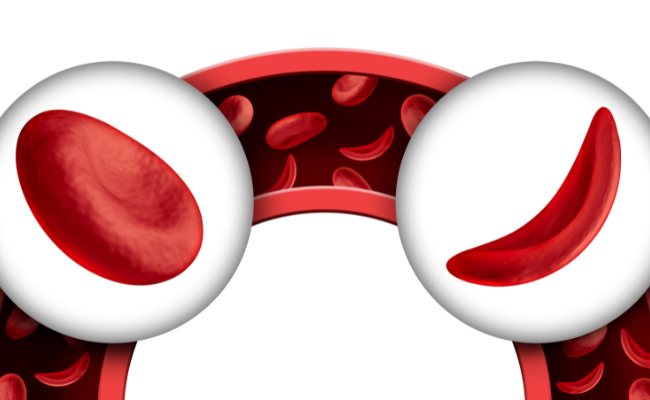How to Treat Anaemia Sickle Cell?
- December 18, 2023
- No Comments

What is Sickle Cell Anemia?
Sickle cell anemia is a hereditary blood disorder characterized by the presence of abnormal hemoglobin known as hemoglobin S (HbS). This genetic mutation causes red blood cells to take on a crescent or "sickle" shape, which can hinder their ability to flow smoothly through blood vessels. The irregularly shaped cells can get stuck in small blood vessels, leading to pain, organ damage, and other complications.
Why is Sickle Cell Anemia a Concern?
Sickle cell anemia is a significant concern due to the range of health issues it can cause. The abnormal shape of red blood cells in individuals with this condition can lead to the following problems:
- Pain Crises: Sudden and severe episodes of pain, known as pain crises, can occur when sickled red blood cells block blood flow to organs and tissues.
- Organ Damage: Over time, the repeated blockage of blood vessels can result in organ damage, particularly to the spleen, kidneys, and liver.
- Infections: Individuals with sickle cell anemia are more susceptible to infections because the spleen, which plays a crucial role in fighting infections, may not function properly.
- Anemia: The destruction of sickle cells can lead to anemia, a condition where the body lacks enough healthy red blood cells to carry oxygen effectively, causing fatigue and weakness.
How to Treat Sickle Cell Anemia?
While there is no cure for sickle cell anemia, several treatments and management strategies are available to alleviate symptoms, reduce complications, and improve the overall quality of life for individuals with this condition. Here's a comprehensive guide on how to treat sickle cell anemia:
- Pain Management: Pain crises are a hallmark of sickle cell anemia. Pain relief is a primary focus of treatment, and it may involve over-the-counter or prescription pain medications. Severe pain crises may require hospitalization and stronger pain management techniques.
- Hydration: Staying well-hydrated is crucial for individuals with sickle cell anemia as dehydration can trigger pain crises. Drinking plenty of fluids, particularly water, helps maintain blood flow and prevent sickling of red blood cells.
- Blood Transfusions: Blood transfusions can increase the number of healthy red blood cells in the body and improve oxygen transport. They are often used to treat severe anemia and prevent complications.
- Hydroxyurea: Hydroxyurea is a medication that can reduce the frequency and severity of pain crises. It works by increasing the production of a type of hemoglobin that interferes with the formation of sickled cells.
- Folic Acid Supplementation: Folic acid supplements are commonly prescribed to individuals with sickle cell anemia. Folic acid helps the body produce red blood cells, which can be especially beneficial during periods of increased cell turnover.
- Bone Marrow Transplant: In some cases, a bone marrow transplant may be considered as a potential cure for sickle cell anemia. This procedure replaces the defective bone marrow with healthy donor marrow.
Treatment Solutions:
Comprehensive treatment of sickle cell anemia focuses on symptom management, pain relief, and prevention of complications. Here are the key solutions:
- Multidisciplinary Care: Sickle cell anemia often requires a team of healthcare professionals, including hematologists, pain specialists, nurses, and social workers, to provide comprehensive care.
- Pain Management Strategies: Effective pain management is essential to improve the quality of life for individuals with sickle cell anemia. This may include both pharmacological and non-pharmacological approaches.
- Individualized Treatment Plans: Treatment plans should be tailored to the specific needs of each individual with sickle cell anemia, taking into account their medical history, symptom severity, and response to treatments.
- Education and Support: Education about the condition and access to support groups can help individuals and their families better cope with the challenges of sickle cell anemia.
- Preventive Measures: Preventive measures such as vaccinations and antibiotics may be recommended to reduce the risk of infections.
Benefit Points:
Effective treatment of sickle cell anemia offers several significant benefits:
- Pain Relief: Treatment helps alleviate the excruciating pain associated with pain crises, improving the individual's overall quality of life.
- Complication Prevention: Early intervention and treatment reduce the risk of severe complications, including organ damage and infections.
- Enhanced Quality of Life: Managing symptoms and preventing complications allows individuals with sickle cell anemia to lead more active and fulfilling lives.
- Improved Longevity: Advances in treatment have extended the life expectancy of individuals with sickle cell anemia, allowing them to enjoy more years of health and vitality.
- Increased Comfort: Pain management strategies and regular medical care contribute to greater comfort and well-being for those with sickle cell anemia.
Comments (0)